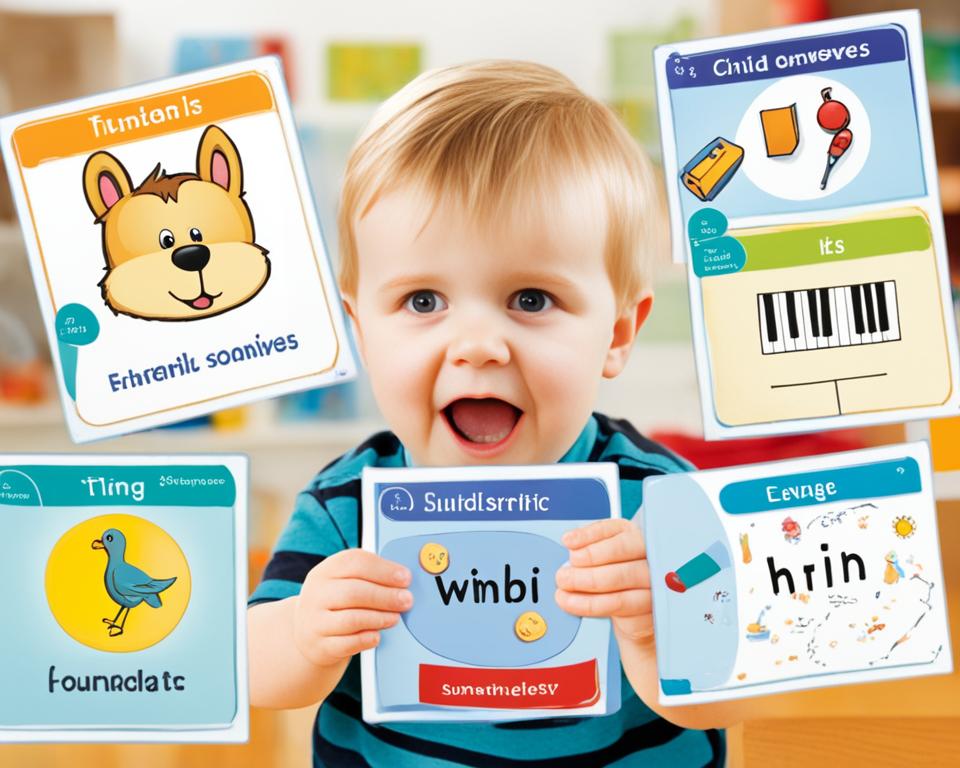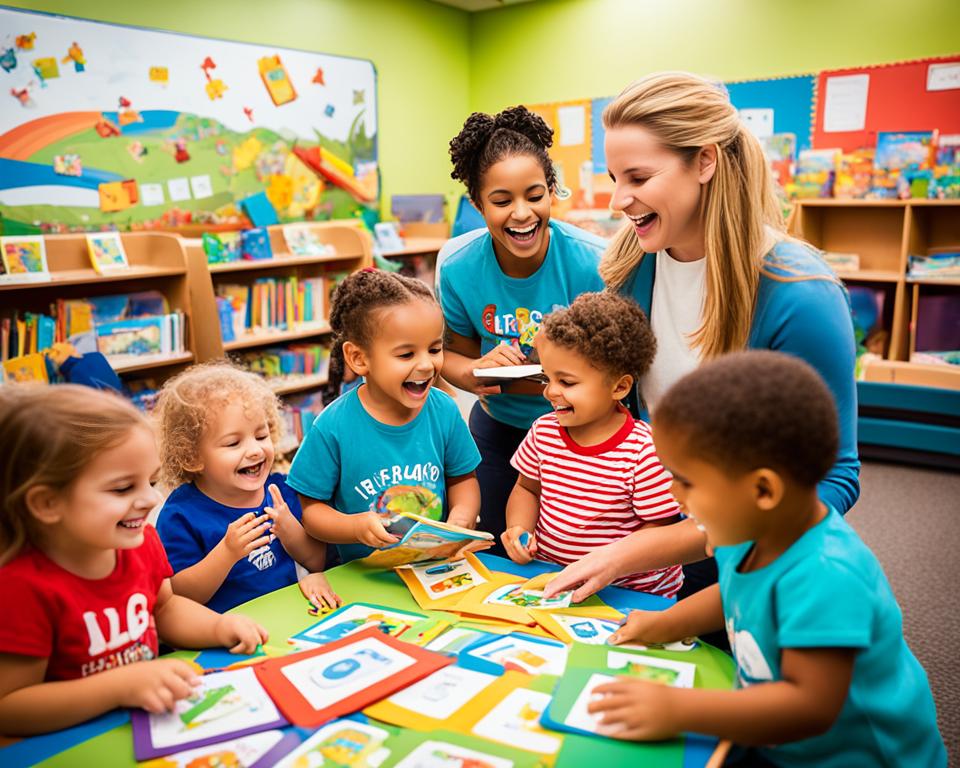- 1. What is Early Childhood Literacy?
- 2. Importance of Early Literacy Development
- 3. Home and School Contributions
- 4. Early Childhood Learning
- 5. Preschool Instructional Best Practices
- 6. Supporting English Language Learners
- 7. Explicit and Systematic Reading Instruction
- 8. Engaging Families in Literacy Development
- 9. Transition to Kindergarten
- 10. Conclusion
- 11. FAQ
- 11.1 What is early childhood literacy and why is it important?
- 11.2 How does brain development impact early literacy skills?
- 11.3 What is the role of both home and school in supporting early literacy?
- 11.4 How do children develop emergent literacy skills at varying rates?
- 11.5 What are some best practices for preschool literacy instruction?
- 11.6 How can we support English Language Learners’ language and literacy development?
- 11.7 What explicit and systematic reading instruction is important in early childhood?
- 11.8 How can families support children’s early literacy development?
- 11.9 What is the importance of the transition from preschool to kindergarten?
- 12. Source Links
As an educator, I recognize the crucial importance of investing in early childhood literacy and language development. Children’s literacy foundations are established as early as infancy and grow throughout early childhood, a time when the brain is at its greatest plasticity levels. The development of oral language skills, understanding of the alphabetic principle, and knowledge of print concepts are the greatest predictors of children’s future reading ability.
Children who have abundant opportunities to interact with language from infancy to early elementary school are more likely to develop into skilled and fluent readers. By investing in early childhood literacy, I can ensure that children have frequent and meaningful language interactions, making them less likely to experience later reading and academic difficulty, including special education placements and grade level retention.
Key Takeaways
- Early childhood is a critical period for literacy and language development.
- Oral language skills, alphabetic knowledge, and print awareness are key predictors of reading success.
- Providing abundant language interactions from infancy to elementary school supports future reading achievement.
- Investing in high-quality early childhood literacy instruction can prevent later reading difficulties.
- Collaboration between preschools, elementary schools, and families is crucial for supporting children’s literacy development.
What is Early Childhood Literacy?
Early childhood literacy encompasses the foundational skills and knowledge that young children acquire to support their eventual reading and writing proficiency. This crucial developmental period from infancy through the preschool years lays the groundwork for early childhood learning and preschool education. Emerging research highlights the most pivotal components of early literacy development and language acquisition, which form the basis of cognitive development.
Oral Language Development
A central focus of preschool literacy instruction is developing children’s oral language skills, including expressive and receptive vocabulary as well as listening comprehension. Strong oral language abilities provide the foundation for later reading success, as children draw upon their spoken language knowledge when learning to read.
Alphabetic Principle
In addition to oral language, preschoolers also need to develop an understanding of the alphabetic principle – the knowledge that letters represent the individual sounds in spoken words. This includes both letter recognition and phonological awareness, the ability to identify and manipulate the sounds within spoken language.
Print Awareness
The third key component of early childhood literacy is print awareness, or the understanding that print carries meaning and follows specific conventions. This includes recognizing environmental print, understanding book handling, and recognizing features of written language.
Together, these pillars of oral language, alphabetic knowledge, and print awareness comprise the multifaceted nature of emergent literacy – the precursor skills that young children develop to prepare them for the formal instruction of reading and writing.
Importance of Early Literacy Development
The early years of a child’s life are a critical period for cognitive skills, social-emotional growth, and overall cognitive development. Nearly 90% of a child’s neural pathways, or brain connections, are established by the time they are six-years old. This rapid development underscores the importance of fostering language acquisition and social-emotional learning during the preschool years.
Neural Pathway Formation
Children who have abundant opportunities to interact with language from infancy to early elementary school are more likely to develop into skilled and fluent readers. These rich language experiences allow children to develop the many neural pathways necessary for developing robust literacy skills. The cognitive development that occurs during this time lays the foundation for future kindergarten readiness.
Language Interactions
These early experiences establish a base of vocabulary, print, and content knowledge that children can build on when they enter kindergarten. Evidence suggests children learn most of their language and vocabulary-related knowledge at home through caregiver and sibling interactions, while they learn code-related knowledge like phonemic awareness at school.
Reading Readiness
By providing young learners with ample opportunities to engage with language, we can set them up for success in developing the literacy skills and social-emotional growth necessary for becoming skilled, fluent readers. This strong foundation allows children to enter kindergarten with the cognitive skills and language acquisition needed to thrive in the transition to formal schooling.

Home and School Contributions
Students’ experiences both at home and school play critical roles in their preschool education and literacy development. Children learn most of their language acquisition and vocabulary-related knowledge at home through caregiver and sibling interactions, while they learn code-related knowledge like phonemic awareness at school. Literacy instruction in both of these spaces can be both spontaneous and planned, individual and community-based. Literacy skills and knowledge are not something that exist exclusively in a classroom; rather, they can be taught and learned in all aspects of a preschooler’s life.
Recognizing the importance of both home and school contributions to cognitive development and kindergarten readiness is crucial for supporting young learners’ holistic growth. By partnering with families and aligning instructional approaches, educators can ensure a cohesive and comprehensive literacy experience for every child.
Early Childhood Learning
As children progress through the early childhood years, they will develop emergent literacy skills at varying rates depending on their home language environment, preschool instruction, and personal development. Understanding where students fall along this developmental continuum allows teachers and caregivers to provide targeted intervention where necessary.
Developmental Milestones
Children who fall behind in their early literacy development are at greater risk of not becoming fluent readers due to the Matthew effect, where the rich get richer and the poor get poorer. Identifying and addressing reading difficulties early on is crucial for ensuring all children build a strong cognitive development foundation and are prepared for kindergarten readiness.
Monitoring Progress
Regular progress monitoring can help educators and families identify children who may need additional support in developing early childhood learning and preschool education skills. By closely tracking children’s development of oral language, alphabetic knowledge, and print awareness, adults can intervene quickly to address any emerging cognitive skills challenges.
Addressing Reading Difficulties
Children may experience reading challenges for a variety of reasons, including poverty, intellectual disability, hearing problems, dyslexia, English language learner status, and language disorders. A strong preschool literacy development program, combined with engaged family partnerships, can help mitigate the effects of these factors on children’s cognitive development and overall academic success.

Preschool Instructional Best Practices
A majority of children ages 3-6 spend their weekdays in the care of someone other than their primary caregivers. In these preschool settings, literacy instruction most often focuses on group activities like read-aloud sessions and alphabet instruction. Strong preschool literacy programs, however, go beyond these basic group activities to truly develop children’s oral language skills, knowledge of the alphabetic code, and print knowledge.
Group Activities
While group activities like shared reading and alphabet time are important components of preschool literacy instruction, they should not be the sole focus. Effective preschool teachers incorporate a variety of play-based learning strategies, drawing from philosophies like Montessori, Reggio Emilia, and Waldorf education, to engage young learners.
Oral Language Instruction
Developing children’s language acquisition is a critical element of preschool literacy instruction. Teachers should provide ample opportunities for children to engage in meaningful conversations, build their expressive and receptive vocabularies, and practice listening comprehension skills.
Code-Based Instruction
In addition to meaning-based instruction that focuses on language and comprehension, preschool teachers should also incorporate code-based instruction that helps children understand the relationship between spoken language and the written word. This literacy development includes teaching children about the alphabetic principle and providing explicit instruction in phonemic awareness and other foundational reading skills.
Supporting English Language Learners
Early childhood education can play an essential role in preparing young English language learners (ELLs) for later success in school. Effective strategies for supporting ELL language development include providing explicit, systematic vocabulary instruction; ensuring ELLs have ample opportunities to talk with both adults and peers; exposing ELLs to rich language input; and structuring the classroom space and routine to provide scaffolding.
Language Development Strategies
To support ELL language development, preschool teachers should implement strategies such as explicit, systematic vocabulary instruction, ample opportunities for ELLs to engage in conversation with both adults and peers, and exposure to rich language input. Structuring the classroom environment and daily routine to provide scaffolding can also benefit ELLs as they acquire proficiency in English.
Literacy Development Strategies
Effective strategies for supporting ELL literacy development include designing instruction that focuses on all foundational literacy skills, recognizing that many literacy skills can transfer across languages, and accelerating English literacy development by helping ELLs make connections between their first language and English. This holistic approach ensures ELLs receive the targeted support they need to develop robust literacy skills.
Home Language Connections
Preschools can further support ELL language and literacy development by encouraging continued development of the home language, sending home books in the child’s first language, and providing strategies for family literacy activities. Maintaining and strengthening the home language lays a strong foundation for acquiring proficiency in English.
Explicit and Systematic Reading Instruction
Reading is not a natural process, but one that must be taught explicitly and systematically. Foundational skills like phonemic awareness play a crucial role in developing early readers. Phonemic awareness, the ability to identify and manipulate individual sounds in spoken language, is essential for young learners to grasp the alphabetic principle and make progress in their literacy development.
Phonemic Awareness
Providing ample opportunities for students to apply their phonemic awareness skills throughout the day is key. This may involve activities like phoneme isolation, blending, segmentation, and manipulation, which help children understand that spoken words are composed of individual sounds.
Application and Practice
Integrating phonemic awareness practice into daily routines and across learning domains allows young children to build fluency and confidence. Whether it’s identifying initial sounds during circle time or segmenting words during a shared reading, consistent language acquisition activities strengthen this critical foundation for early childhood learning.
Decodable Texts
Decodable texts, which follow a specific progression of phonics patterns, offer an important bridge between phonics instruction and connected text. These carefully constructed books help build students’ confidence and success in reading by allowing them to apply their growing knowledge of letter-sound relationships.
Heart Words Approach
The “heart words” approach, which teaches high-frequency words that can be sounded out phonetically, promotes orthographic mapping and helps students remember how to read and spell words. This sight word instruction complements the systematic preschool education focused on developing decoding skills.

Engaging Families in Literacy Development
Families play a critical role in supporting children’s early childhood learning and preschool education. Parents and guardians can foster the development of oral vocabulary and print awareness through organic conversations and shared reading activities. By encouraging continued development of the home language, sending home books in the child’s first language, and providing strategies for family literacy activities, preschools can actively engage families in their children’s literacy development and language acquisition.
Forging strong partnerships between preschools and families is essential for ensuring that all children have the support they need to develop strong foundational literacy skills. When families are empowered to participate in their children’s learning, they become valuable allies in promoting family engagement and enhancing overall academic success.
| Strategies for Engaging Families in Literacy Development | Benefits for Children |
|---|---|
|
|
By actively engaging families in the literacy development process, preschools can empower parents and guardians to become valuable partners in their children’s educational journey. This collaborative approach ensures that all children receive the support they need to thrive and succeed in their early childhood learning and beyond.
Transition to Kindergarten
The transition from preschool to kindergarten marks a critical juncture in young learners’ academic journeys. A strong early childhood learning program can ensure children enter kindergarten with the foundational skills they need to thrive, including well-developed oral language, alphabetic knowledge, and print awareness. By fostering these essential competencies, preschools can set the stage for children’s ongoing cognitive development and language acquisition.
Kindergarten Readiness
Effective preschool literacy instruction lays the groundwork for children’s kindergarten readiness. When children possess a solid grasp of early literacy concepts, they are better equipped to seamlessly transition into the more formalized academic setting of elementary school. This preparedness enables them to focus on mastering new skills and advancing their learning, rather than struggling to catch up on foundational knowledge.
Collaborative Efforts
Collaboration between preschool education providers and elementary schools, as well as with families, is crucial in supporting children’s successful transition to kindergarten. By aligning expectations, sharing information, and coordinating efforts, these key stakeholders can ensure a smooth continuum of learning and provide the necessary scaffolding for young learners. This collaborative approach helps solidify children’s cognitive development and language acquisition as they embark on the next phase of their educational journey.

Conclusion
Investing in high-quality early childhood literacy instruction is essential for setting young learners up for success. By focusing on developing children’s oral language skills, alphabetic knowledge, and print awareness, preschools and families can build a strong foundation for future reading achievement. Through explicit, systematic instruction and engaging family partnerships, educators can ensure all children have the skills and support they need to become skilled, fluent readers.
The development of early childhood literacy skills, including language acquisition and cognitive development, is crucial for children’s future academic success. Preschool education that prioritizes literacy development, along with collaborative efforts between schools and families, can help promote kindergarten readiness and set children on the path to becoming proficient readers. By investing in these important early learning experiences, we can empower the next generation to reach their full potential.
Ultimately, the key to fostering early childhood literacy lies in a comprehensive, multifaceted approach that leverages the resources and expertise of both educational institutions and families. By nurturing children’s language skills, cognitive abilities, and print awareness, we can ensure that all students, regardless of their background, have the foundation they need to thrive in the classroom and beyond.
FAQ
What is early childhood literacy and why is it important?
Early childhood literacy refers to the knowledge, skills, and attitudes that promote reading and writing development in young children, including oral language, alphabetic principle, and print awareness. Investing in early literacy is crucial as it establishes a strong foundation for future academic success.
How does brain development impact early literacy skills?
Nearly 90% of a child’s neural pathways are established by age 6. Children who have abundant language interactions from infancy to early elementary are more likely to develop into skilled readers, as these experiences allow them to build the necessary neural connections.
What is the role of both home and school in supporting early literacy?
Children learn language and vocabulary at home through caregiver interactions, while they develop code-related skills like phonemic awareness at school. Literacy instruction in both settings, through both spontaneous and planned activities, is critical for children’s holistic literacy development.
How do children develop emergent literacy skills at varying rates?
Children’s literacy development is influenced by their home language environment, preschool instruction, and personal growth. Understanding where students fall on the developmental continuum allows educators and families to provide targeted intervention when necessary.
What are some best practices for preschool literacy instruction?
Effective preschool literacy programs focus on developing oral language skills, alphabetic knowledge, and print awareness through a balance of code-based (phonics) and meaning-based (comprehension) instruction, often in the context of group activities.
How can we support English Language Learners’ language and literacy development?
Key strategies include providing explicit vocabulary instruction, ensuring ample opportunities to use language, exposing students to rich language input, and making connections between their first language and English.
What explicit and systematic reading instruction is important in early childhood?
Critical components include phonemic awareness practice, decodable texts to build decoding skills, and a “heart words” approach to promote orthographic mapping and sight word recognition.
How can families support children’s early literacy development?
Parents and guardians can foster oral vocabulary and print awareness through everyday conversations and shared reading. Preschools can engage families by encouraging home language use and providing family literacy activities.
What is the importance of the transition from preschool to kindergarten?
A strong preschool literacy program can ensure children enter kindergarten with the foundational skills they need to be successful, including oral language, alphabetic knowledge, and print awareness. Collaborative efforts between preschools, elementary schools, and families can support this critical transition.
Source Links
- https://education.uconn.edu/2021/10/20/best-practices-in-early-childhood-literacy/
- https://www.colorincolorado.org/article/8-strategies-preschool-ells-language-and-literacy-development
- https://www.edutopia.org/article/early-literacy-strategies-work/
